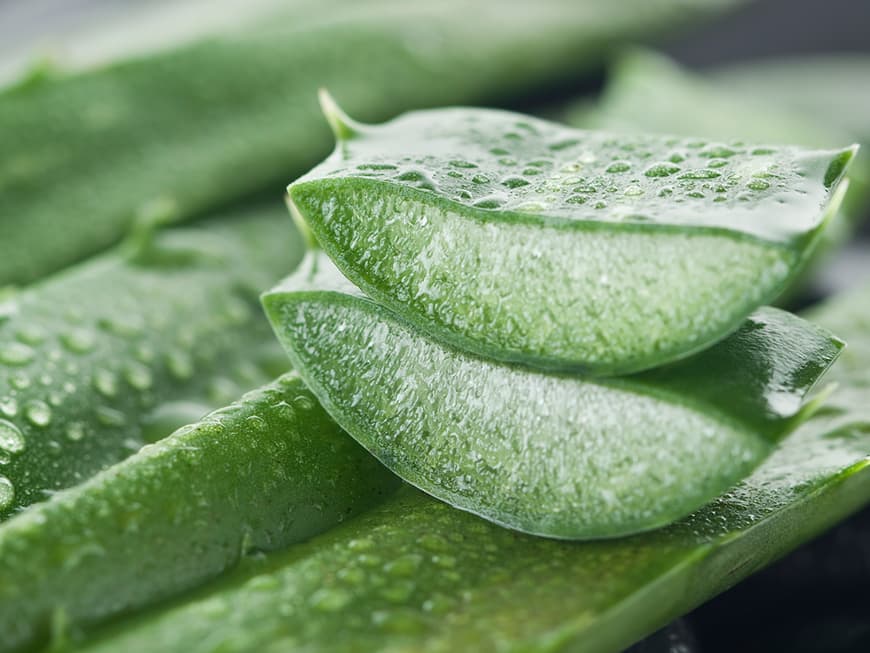
The name "aloe" comes from Arabic and translates as "bitter", as its leaves have a rather bitter taste. Studies have shown that aloe vera works better on burns and scalds than the usual antibacterial ointments from the pharmacy: the pain subsided more quickly and the wounds healed sooner. The "plant of immortality" - as the inconspicuous plant was called in ancient Egypt - also cools and heals sunburn.
Research on the desert lily...
... have shown that it stores around 160 substances, including enzymes, vitamins, amino acids and minerals. These substances are stored inside the leaves and thus ensure their survival in the desert. All these substances are also good for humans - certainly on the outside on the skin.
But the substance that makes the desert plant so interesting is called "acemannan". This is a so-called polysaccharide, which humans also produce themselves - unfortunately only until puberty. This long-chain sugar form is incorporated into the cells and has an antiviral and antibacterial effect.
Many preparations containing aloe vera extracts are available in drugstores and pharmacies, both for swallowing and for applying to the skin. However, studies have shown that aloe is not effective when taken internally as a capsule or juice.
You can use the plant yourself ...
... on your windowsill - it doesn't need much to feel at home. A little sun and a little water is all it needs. Aloe plants are available in flower stores or on the Internet. And to get the gel, cut off a leaf, slit it open at the side and squeeze it out. The cut leaf should then be placed in the
in the fridge to preserve the active ingredients.
You might also be interested in this:
Natural - skin care and cleansing without chemicals
CBD oil: What's behind the trendy active ingredient from the cannabis plant
Grape seed extract: Healthy and vital with plant substances
We rely on natural medicine: the 7 best germ killers from nature
Essential oils: 6 plants with healing properties
Natural healing with the power of plants
